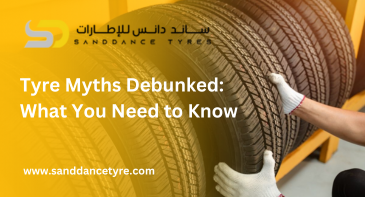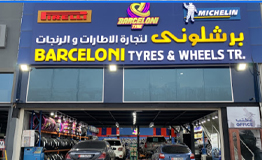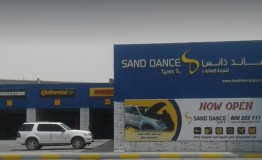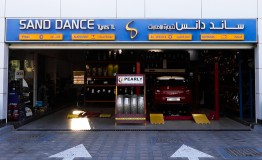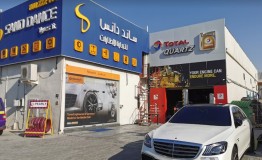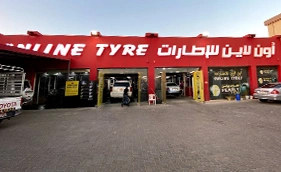We are here to provide 100% services to our customer
Tyre Myths Debunked: What You Need to Know
Tyres are one of the most crucial components of any vehicle, ensuring safety, performance, and fuel efficiency. However, over time, many tyre myths have emerged, leading to misconceptions that can impact a driver’s decision-making. At Sand Dance Tyre, we believe in providing accurate information to help drivers make informed choices about their tyres.
In this blog, we will explore some of the most common tyre myths, separate facts from fiction, and provide you with the truths behind these common beliefs.
Myth 1: New Tyres Should Always Go on the Front
Truth: Rear tyres provide more stability than front tyres
One of the most common misconceptions is that new tyres should always be installed on the front axle. However, experts recommend placing new tyres on the rear axle instead. Why? Because the rear tyres provide stability and grip, especially in wet conditions. Worn-out rear tyres can cause a car to lose control, leading to dangerous situations.
Myth 2: You Only Need to Replace One Tyre at a Time
Truth: Tyres should be replaced in pairs or sets
Replacing just one tyre can cause an imbalance in the car’s handling, as different tread depths can create uneven traction. It is always best to replace tyres in pairs (both front or both rear) or ideally, all four at once to maintain uniform performance.
Myth 3: Higher Tyre Pressure Means Better Fuel Efficiency
Truth: Overinflation can lead to uneven wear and reduced grip
While it’s true that maintaining proper tyre pressure helps with fuel efficiency, overinflating tyres does more harm than good. Excess pressure can lead to uneven wear, reduced traction, and even an increased risk of a blowout. Always stick to the manufacturer’s recommended tyre pressure for optimal performance and safety.
Myth 4: All-Season Tyres Work Well in Every Climate
Truth: All-season tyres are not a substitute for winter tyres
Many drivers assume that all-season tyres are effective in all weather conditions. While they offer a balance of performance, they do not provide the same level of grip and control as winter tyres in icy or snowy conditions. If you drive in extreme winter conditions, investing in winter tyres is a safer choice.
Myth 5: A Penny Test is Enough to Check Tyre Tread
Truth: Use a tread depth gauge for accurate measurement
The penny test is a traditional way to check tyre tread depth, but it may not always be reliable. The safest method is to use a tread depth gauge, ensuring your tyres meet the legal and safe tread depth of at least 1.6mm.
Myth 6: Tyres Don’t Expire If They Look Fine
Truth: Tyres have a lifespan regardless of their appearance
Even if your tyres look new, they degrade over time. Tyre rubber can harden and lose elasticity, leading to reduced performance and safety. Experts recommend replacing tyres every six years, even if they haven’t reached their tread wear limit.
Myth 7: Cheap Tyres Perform Just as Well as Premium Ones
Truth: Quality tyres offer better performance, safety, and longevity
While budget tyres may seem like a cost-effective choice, they often lack the durability, safety features, and efficiency of premium brands. Investing in high-quality tyres ensures better grip, handling, and longevity, making them more cost-effective in the long run.
Myth 8: Tyre Rotations Aren’t Necessary
Truth: Regular rotations extend tyre life
Tyre rotation helps distribute wear evenly across all four tyres, extending their lifespan and improving performance. It is recommended to rotate your tyres every 8,000 to 10,000 km.
Myth 9: New Tyres Don’t Need to Be Broken In
Truth: New tyres require a break-in period
When you get new tyres, the outer layer of lubricant needs time to wear off. The break-in period usually lasts for the first 800-1,000 km, during which you should drive cautiously to allow the tyres to adjust to the road.
Myth 10: Tyre Blowouts Happen Due to Manufacturing Defects
Truth: Most blowouts occur due to poor maintenance
Blowouts are rarely due to manufacturing defects. Instead, they occur because of underinflation, overloading, or old and worn-out tyres. Regular tyre inspections and proper maintenance can prevent blowouts and keep you safe on the road.
Conclusion: Don’t Fall for Tyre Myths!
Understanding the truths behind common tyre myths can help you make better decisions and ensure your vehicle’s safety and efficiency. At Sand Dance Tyre, we are committed to providing top-quality tyres and expert advice to keep you informed and safe on the road.
Need Help Choosing the Right Tyres?
Visit Sand Dance Tyre for expert tyre consultation and a wide range of premium tyre brands. Contact us today to find the perfect tyres for your vehicle!
FAQs About Tyres
1. How often should I check my tyre pressure?
It’s best to check your tyre pressure at least once a month and before long trips to ensure optimal performance and safety.
2. How can I extend the lifespan of my tyres?
Regular tyre rotation, alignment checks, maintaining proper tyre pressure, and avoiding rough roads can help extend tyre life.
3. What is the ideal tyre tread depth for replacement?
The legal minimum tread depth is 1.6mm, but for better safety, consider replacing tyres once they reach 3mm.
4. Can I mix different tyre brands on my car?
It’s not recommended as different brands have varying performance characteristics, which can affect handling and stability.
5. Where can I buy high-quality tyres in Dubai?
Sand Dance Tyre offers a wide range of premium tyres for all vehicle types. Visit us for expert guidance and the best deals on top tyre brands!
Get the Best Tyre Deals Today!
Upgrade your car’s performance with high-quality tyres from Sand Dance Tyre. Contact us now for expert advice and unbeatable prices!


